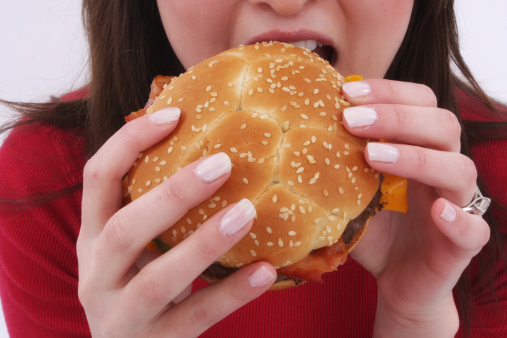How to Cut Back on Unhealthy Fats
Article posted in: Lifestyle
Some fats get a health halo, others dietary devil horns—and all for good reason. The healthy fats are monounsaturated and polyunsaturated, and they can have beneficial effects on your heart and health, when eaten in moderation and used to replace trans and saturated fats in your diet. Eating foods high in trans fats (the unhealthy ones) can raise levels of LDL cholesterol (the unhealthy kind) in your blood, and may up your risk of cardiovascular disease. As for saturated fats, past research has suggested that these fats, commonly found in red meat, whole milk and cheese, are also associated with an increase in total cholesterol, as well as LDL cholesterol, which can cause complications with the heart and other arteries. However, recent explorations of the relationship between saturated fat and cardiovascular disease have led many to question the link. While scientists continue to sort out the facts, it’s best to minimize this type of fat in your diet.
The government recommends consuming as little trans fats as possible, and limiting saturated fat to less than 10 percent of your total daily calories—that amounts to about 22 grams of saturated fat a day for a 2,000 calorie diet—even less for those on a weight loss diet (if you’re a woman on the Nutrisystem program, aim for fewer than 13 grams per day; men should aim for fewer than 17 grams per day). The American Heart Association suggests limiting sat fat to less than 7 percent of total calories (16 grams in 2000 calorie diet), and trans fats to less than 1 percent (or 2 grams of trans fats).
While keeping an exact count may be tough, here are four easy tips to help you swap in good fats, and trim out the unhealthy ones:
Choose low-fat dairy. It’s such a simple switch and it makes a significant difference: Having one cup of skim milk instead of whole saves you about 4.5 grams of saturated fat; nonfat yogurt instead of full-fat cuts 5 grams of saturated fat.
Eat more fish and nuts. Red meat is one of the main sources of saturated fat in our diets, so vary where you get your protein: Aim for about 8 ounces of seafood per week (for a 2000 calorie diet), according to the US dietary guidelines; and snack on ½ ounce portions of almonds, cashews or peanuts. And when you do eat meat, make sure it’s lean and trim any visible fat.
Cook with oil instead of butter. That’s because just one tablespoon of butter contains more than 7 grams of saturated fat; the same amount of olive oil has less than 2 grams. And one tablespoon of canola oil, only 1 gram. Those liquid oils, including also sunflower and safflower, are mostly made of healthy unsaturated fats. Solid fats—like butter, shortening and coconut and palm oil—are mostly saturated.
Scan ingredients of your favorite snacks. If you see “partially hydrogenated oil,” the food contains trans fats—even if the nutrition label says otherwise. Companies can list products as 0 grams trans fats if they contain less than 0.5 grams per serving, so you could still be consuming some trans fats and not know it. Trans fats can be found in fried foods like doughnuts, and baked goods including pie crusts, cookies, crackers, and stick margarines.









